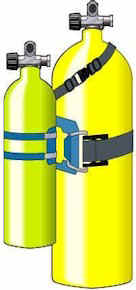Think You've Got a Record-size Fish?
RULES AND REGULATIONS
- Fish must be caught in New Jersey waters.
- Saltwater species taken from a boat must have been caught from a boat which left from and returned to a New Jersey port during the same trip.
- Fish must have been caught on sporting tackle, hooked and landed by entrant.
- New Jersey state records are determined by weight alone. There are no line classes.
- Fish must be weighed on a certified scale.
- A clear photograph of the fish must be furnished for identification purposes. In the case of freshwater species, a yardstick must be placed next to fish to clearly show length.
- Fish should be refrigerated to permit inspection by a biologist in cases of uncertain identification.
Catch a fish that may not be of record size but is of sufficient size and weight to have tested your skill and/or be of "bragging" size? Then enter your catch in the Division of Fish and Wildlife's Skillful Angler Awards Program.
- NJ Record Fish Program
- NJ Skillful angler Awards Program
- NJ State Fishing Records
- NJ Record Fish Application Form
Here are some selected state records:
| Species | Size | Year |
| Amberjack, Greater | 85 lbs | 1993 |
| Black Sea Bass | 8 lbs 2oz. | 1994 |
| Bluefish | 27 lbs 1 oz | 1991 |
| Cod | 81 lbs | 1967 |
| Fluke ( Summer Flounder ) | 19 lbs 12 oz | 1953 |
| Winter Flounder | 5 lbs 11 oz | 1992 |
| Ling ( Red Hake ) | 11 lbs 1 oz | 2002 |
| Pollock ** | 46 lbs 7 oz | 1975 |
| Porgy | 5 lbs 14 oz | 1976 |
| Sheepshead | 14 lbs 1 oz | 1995 |
| Spadefish | 11 lbs 6 oz | 1998 |
| Striped Bass ** | 78 lbs 8 oz | 1982 |
| Tautog ( Blackfish ) ** | 25 lbs | 1998 |
| ** World Record |


